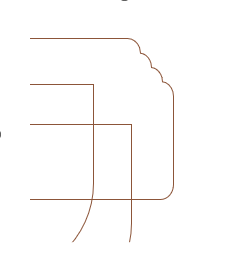
Reporting payments to tax havens: new guidelines
By way of an anti-tax fraud measure, corporate taxpayers are required to report direct and indirect payments to beneficiaries with an address or bank account in a tax haven. This reporting obligation applies to aggregate payments of €100.000 or more per year, irrespective of whether these payments relate to real and genuine transactions. These payments should be reported on form 275F, as part of the annual corporate income tax return (article 307, § 1/2 ITC).
These payments are only tax deductible in Belgium if the company has reported the payments and if the payments relate to real and genuine transactions that are made to persons that cannot be considered as (part of) an artificial construction. The term 'artificial constructions' is interpreted in accordance with the case law of the European Court of Justice (e.g. the Cadbury Schweppes doctrine).
On 20 December 2021, the Belgian tax authorities published new guidelines (Dutch/French), replacing a practice note of 30 November 2010. It summarizes the legislative amendments which were approved since 2010, confirms earlier positions taken by the Finance Minister and provides some useful examples. Finally, the practice note focuses on the compatibility of the reporting obligation with double tax treaties and the EU freedoms.
Which countries are tax havens?
For the purpose of article 307, § 1/2 ITC, a country is considered to be a tax haven if it is listed in
- the Belgian blacklist of countries with zero or low taxation (see article 179 of the Royal Decree to the ITC);
- the European blacklist of non-cooperative jurisdictions, for payments made since 1 January 2021); or
- the list of the OECD Global Forum on Transparency and Exchange of Information for Tax Purposes, including countries that are “non-compliant” with the minimum OECD standards regarding the exchange of information on request (EOIR or transparency standard).
Since 1 January 2021; payments made to “partially compliant” countries are also targeted.
It is sufficient that the country is on one of these three lists at the moment the payment is made. It is not required that the country is qualified as a tax haven during the entire tax year in which the payment is made.
The Belgian tax authorities keep an up-to-date online list of tax havens.
Which payments are targeted?
All payments to beneficiaries in tax havens are targeted, irrespective of whether these payments (in cash or in kind) are expenses from an accounting perspective, irrespective of the nature of the countervalue (e.g. rent, interest, capital repayments, royalties, purchase of goods or fixed assets, services, salaries, etc.) and irrespective of whether these payments are made in the company’s own name or in the name of and/or for the account of another person.
Indirect payments to a tax haven, through persons who are not residing in a tax haven must also be reported if the taxpayer knows, or is supposed to know, that the recipient of the payment is an intermediary and that the actual recipient is located in a tax haven.
Furthermore, the practice note clarifies that the effective payment should be taken into account to verify whether the threshold of €100.000 is reached, and to report on the form 275F. Withholding taxes on interest or royalty payments must be included.
Who or are beneficiaries?
The payment is targeted if it is made to an individual, a legal entity, a partnership, or any other association of persons, located in a tax haven. Payments must be reported if the recipient has an address or a bank account in a tax haven. Payments to an establishment in a non-tax haven are also targeted, if the head office of that establishment is located in a tax haven.
Whether the recipient is liable to income tax is irrelevant.
In the case of a trust, the settlors, trustees, and protectors are considered to be the beneficiary.
Reporting obligation
If the company has not reported the payments, then the payments can be disallowed. However, even if the payments have been reported, the payment can still be disallowed if the payments do not relate to real and genuine transactions, if the general requirements for tax deduction (article 49 ITC) are not satisfied, if the payments are not at arm’s length, etc. The reporting obligation (form 275F) still stands, irrespective of whether the qualifying payments were already disclosed on a fee form 281.50 or on a withholding tax return.
Based on the examples included in the circular letter, the Belgian tax authorities will disallow payments that are mentioned on form 275F, if they lack a certain level of detail (e.g. if only the name of the beneficiary is reported, but not the address). The beneficiary should in any case be identifiable. Multiple payments to the same beneficiary should be reported individually. This requirement does not have any legal basis and the Ruling Committee has already confirmed that reporting the aggregated amount per beneficiary is allowed.
Escape clause in EU or treaty context?
If a payment was not duly and timely reported on form 275F, the payment may still not be disallowed if the double tax treaty between Belgium and the tax have has a non-discrimination clause (see article 24 of the OECD Model Tax Treaty). These tax havens are identified in the list of tax havens.
The same applies to payments to a tax haven in the Belgian blacklist, but that is not included on the EU list and the OECD list, provided that exchange of information is possible between Belgium and the tax.